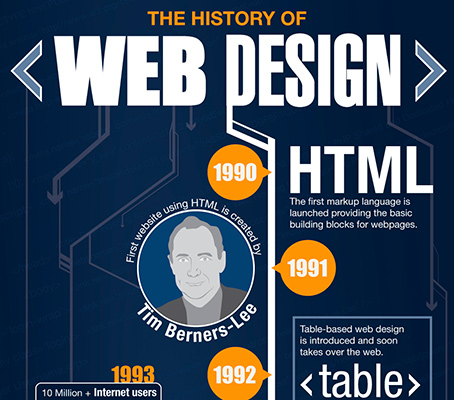Keen To Find How Website Layout Has Transformed In Time? Dive Into The Development From Simpleness To User-Focused Experiences
Keen To Find How Website Layout Has Transformed In Time? Dive Into The Development From Simpleness To User-Focused Experiences
Blog Article
Developed By-Booker Hyldgaard
In the past, websites were easy and focused on information. Navigating was direct, and layout was for desktops. Now, user experience is crucial. Information guides layouts for very easy navigating. Receptive designs match various gadgets. Today, dark mode decreases strain, and minimal menus improve navigation. Interactive functions engage customers, and bold visuals stick out. AI combination improves interaction. See how style has actually advanced to boost your online journey.
Very Early Days of Web Design
In the early days of web design, simpleness preponderated. click here to read were standard, with limited colors, fonts, and formats. The emphasis was on providing details as opposed to flashy visuals. Users accessed the internet via slow-moving dial-up links, so rate and functionality were key.
Navigation menus were straightforward, usually situated on top or side of the web page. Websites were created for computer, as mobile surfing had not been yet prevalent. Web content was king, and developers prioritized easy readability over complicated layout elements.
HTML was the main coding language made use of, and designers had to work within its constraints. Computer animations and interactive functions were minimal contrasted to today's standards. Internet sites were static, with little vibrant content or personalized individual experiences.
Surge of User-Focused Style
With the evolution of website layout, a shift in the direction of user-focused design concepts has become increasingly noticeable. Today, developing websites that prioritize individual experience is crucial for involving visitors and achieving service objectives. User-focused layout entails comprehending the requirements, choices, and behaviors of your target market to customize the site's design, content, and includes appropriately.
Designers now conduct complete study, such as customer surveys and usability screening, to collect understandings and feedback directly from customers. This data-driven approach aids in producing user-friendly navigation, clear calls-to-action, and aesthetically attractive user interfaces that reverberate with visitors. By placing the user at the center of the design process, internet sites can provide an extra individualized and satisfying experience.
Receptive layout has actually also emerged as a key element of user-focused design, making certain that websites are enhanced for various gadgets and display dimensions. This flexibility enhances ease of access and functionality, satisfying the diverse ways individuals communicate with websites today. Fundamentally, the surge of user-focused layout symbolizes a shift in the direction of developing digital experiences that prioritize the needs and expectations of the end individual.
Modern Trends in Website Design
Check out the most up to date patterns forming web design today. One noticeable pattern is dark setting style, supplying a sleek and modern-day appearance while minimizing eye strain in low-light settings. Another key pattern is minimalist navigating, simplifying menus and improving customer experience by focusing on essential elements. Including micro-interactions, such as computer animated buttons or scrolling results, can create a much more interesting and interactive web site. Receptive design continues to be crucial, ensuring smooth user experiences throughout various gadgets. In addition, making use of vibrant typography and unbalanced designs can add aesthetic interest and accentuate certain content.
Incorporating AI innovation, like chatbots for client support or individualized recommendations, boosts user engagement and improves procedures. Ease of access has likewise end up being a considerable pattern, with developers focusing on inclusive style methods to deal with diverse user needs. Welcoming sustainability by maximizing internet site performance for rate and performance is one more arising fad in web design. Working together with customer responses and information analytics to repeat and enhance style continuously is necessary for remaining appropriate in the ever-evolving electronic landscape. By accepting these modern trends, you can create an aesthetically enticing, easy to use website that reverberates with your target market.
Verdict
As you assess the development of web site layout from the early days to currently, you can see exactly how user-focused style has come to be the driving force behind modern patterns.
Welcome the trip of adjustment and adjustment in website design, always keeping the individual experience at the center.
Keep existing with the most up to date trends and technologies, and never stop developing your method to create visually stunning and straightforward sites.
Develop, adapt, and create - the future of website design remains in your hands.
